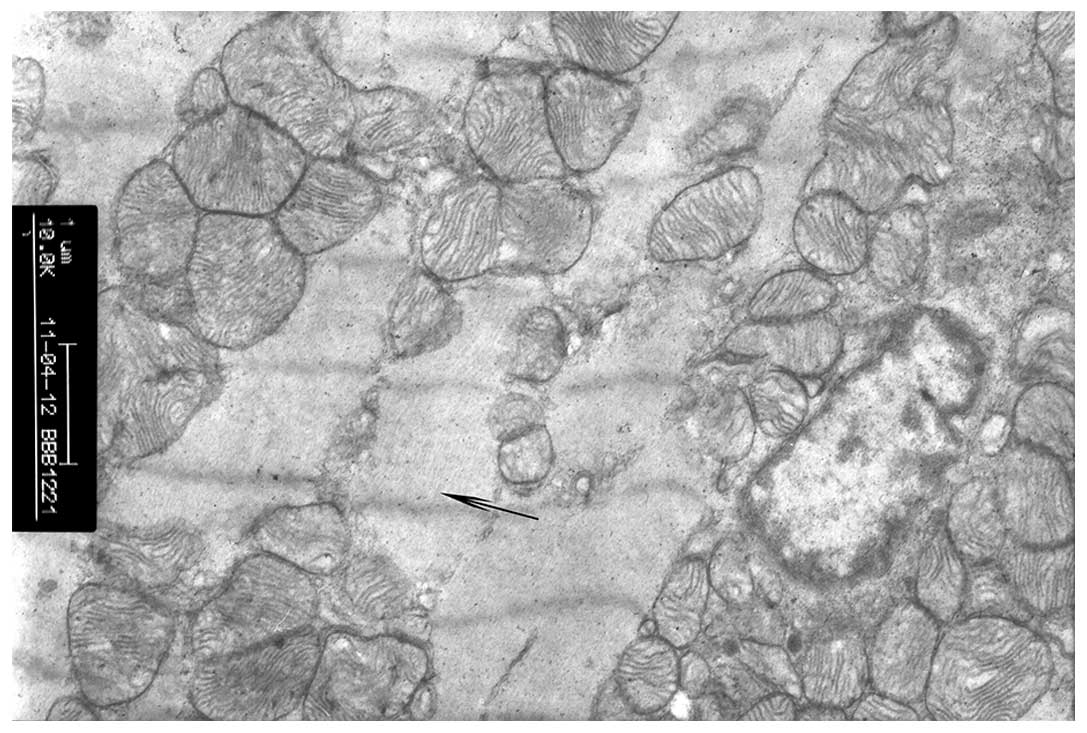Cardioprotective effects of phosphocreatine on myocardial cell ultrastructure and calcium-sensing receptor expression in the acute period following high level spinal cord injury
- Authors:
- Published online on: May 8, 2014 https://doi.org/10.3892/mmr.2014.2219
- Pages: 560-566
Metrics:
Total
Views: 0 (Spandidos Publications: | PMC Statistics:
)
Total PDF Downloads: 0 (Spandidos Publications: | PMC Statistics:
)
Abstract
Phosphocreatine (PCr) mobilizes high-energy phosphates in cardiac muscles, which is potentially useful as a cardioprotective agent in patients with spinal cord injury (SCI). The cardioprotective effects of PCr on myocardial cell ultrastructure and calcium-sensing receptor (CaSR) expression following high-level spinal cord injury (SCI) were investigated. Healthy adult male Sprague-Dawley (SD) rats (n=54) weighing 250-300 g were subjected to C7 SCI injury by Allen's method with or without treatment by abdominal injection of PCr (200 mg/kg) at 6, 12, 24 or 48 h (SCI + treatment and SCI-only groups, respectively; 6 rats/group/time point). Right apical tissues were sampled 2 h following each time interval. Surgeries without SCI were performed in 6 control rats (sham operation group). Cardiac troponin I (cTnI), serum creatine kinase (CK) and creatine kinase (CK-MB) levels were assessed automatically. Myocardial morphology was examined by transmission electron microscopy (TEM). Quantitative real‑time polymerase chain reaction (qRT-PCR) and western blot analysis were used to determine myocardial tissue calcium-sensing receptor (CaSR) mRNA and protein expression, respectively. Normal myocardial ultrastructure was observed in the sham operation group, while SCI-only groups exhibited progressive and extensive damage to myofibrils, sarcomere structure, mitochondrial membranes and vacuole structures, occasionally accompanied by punctured cell membranes, nuclear chromatin condensation and cavitation. SCI + treatment groups, however, exhibited significantly relieved ultrastructural abnormalities and reduced the levels of CaSR, cTnI, CK and CK-MB mRNA and protein expression at all time intervals (P<0.05). In the SCI rat model, PCr exhibited cardioprotection by relieving myocardial ultrastructural abnormalities and preserving the normal metabolic energy balance, including calcium regulation.















